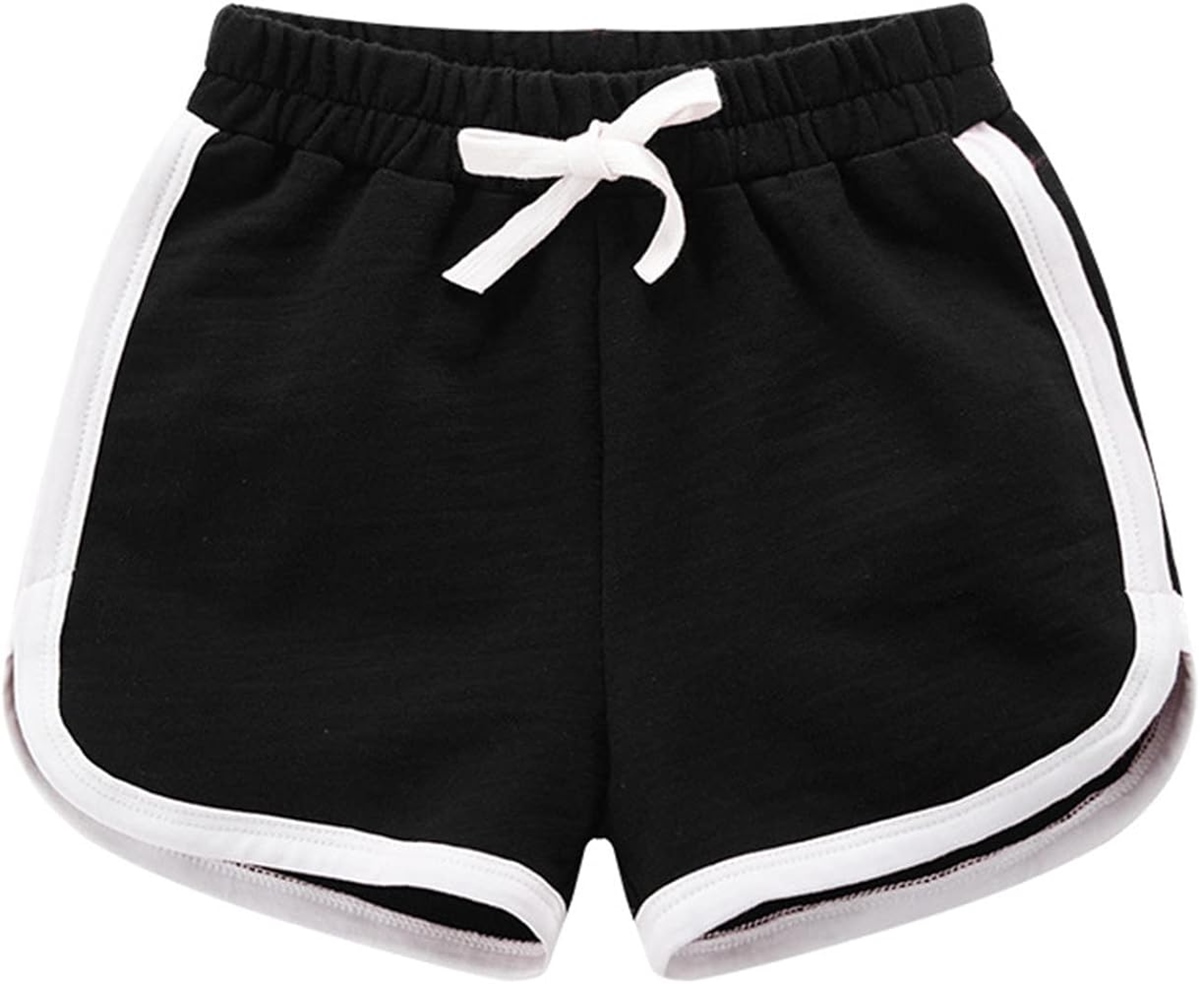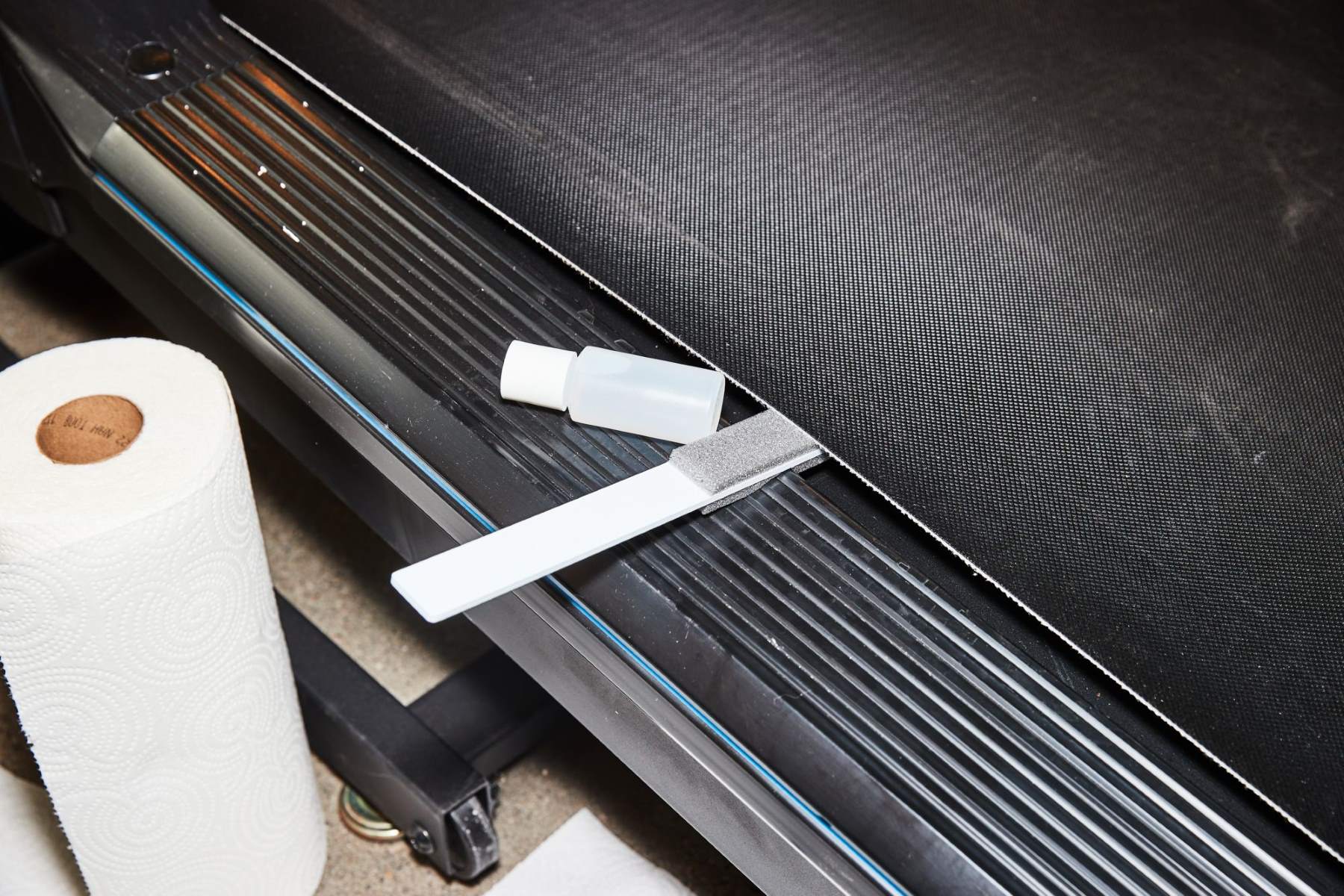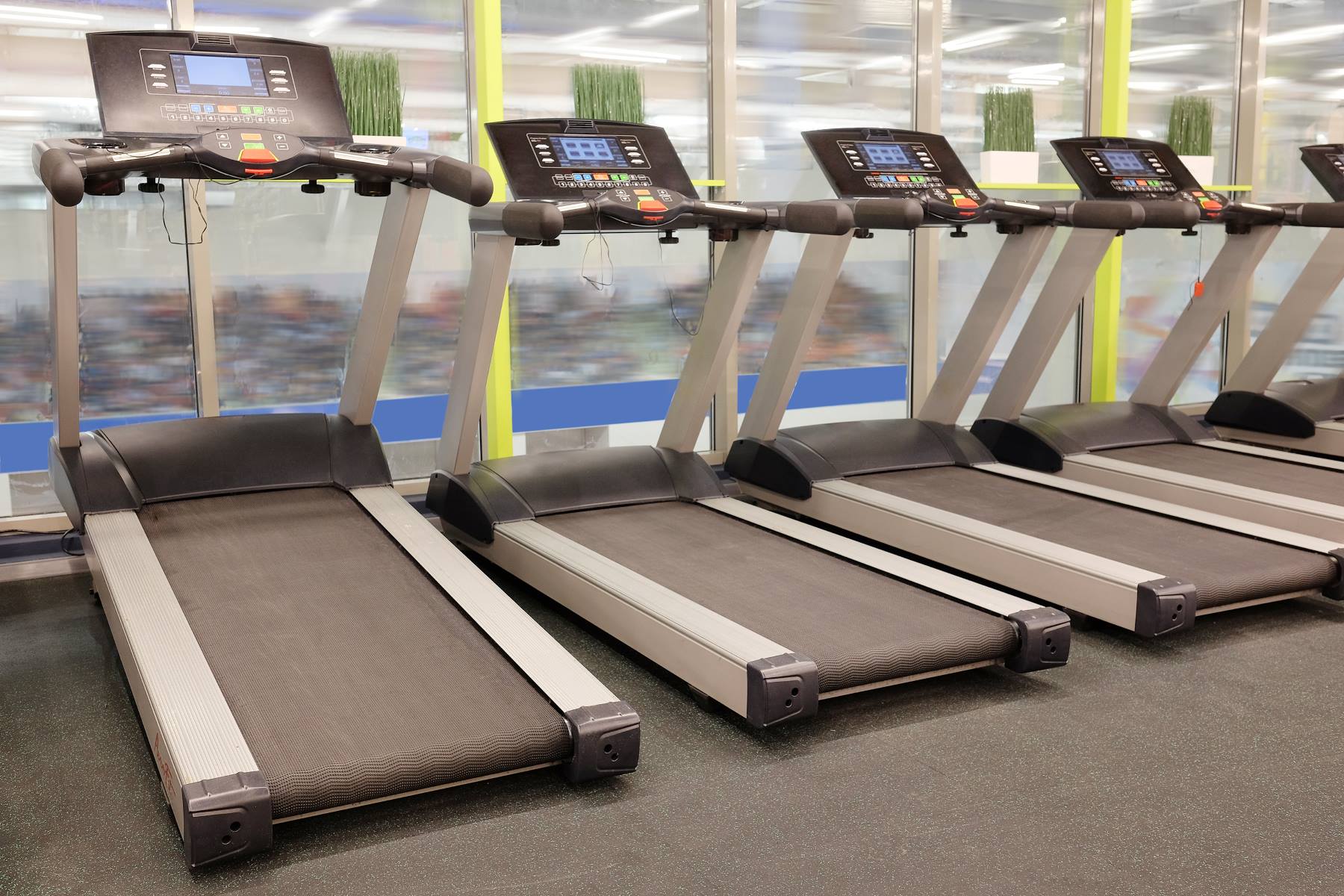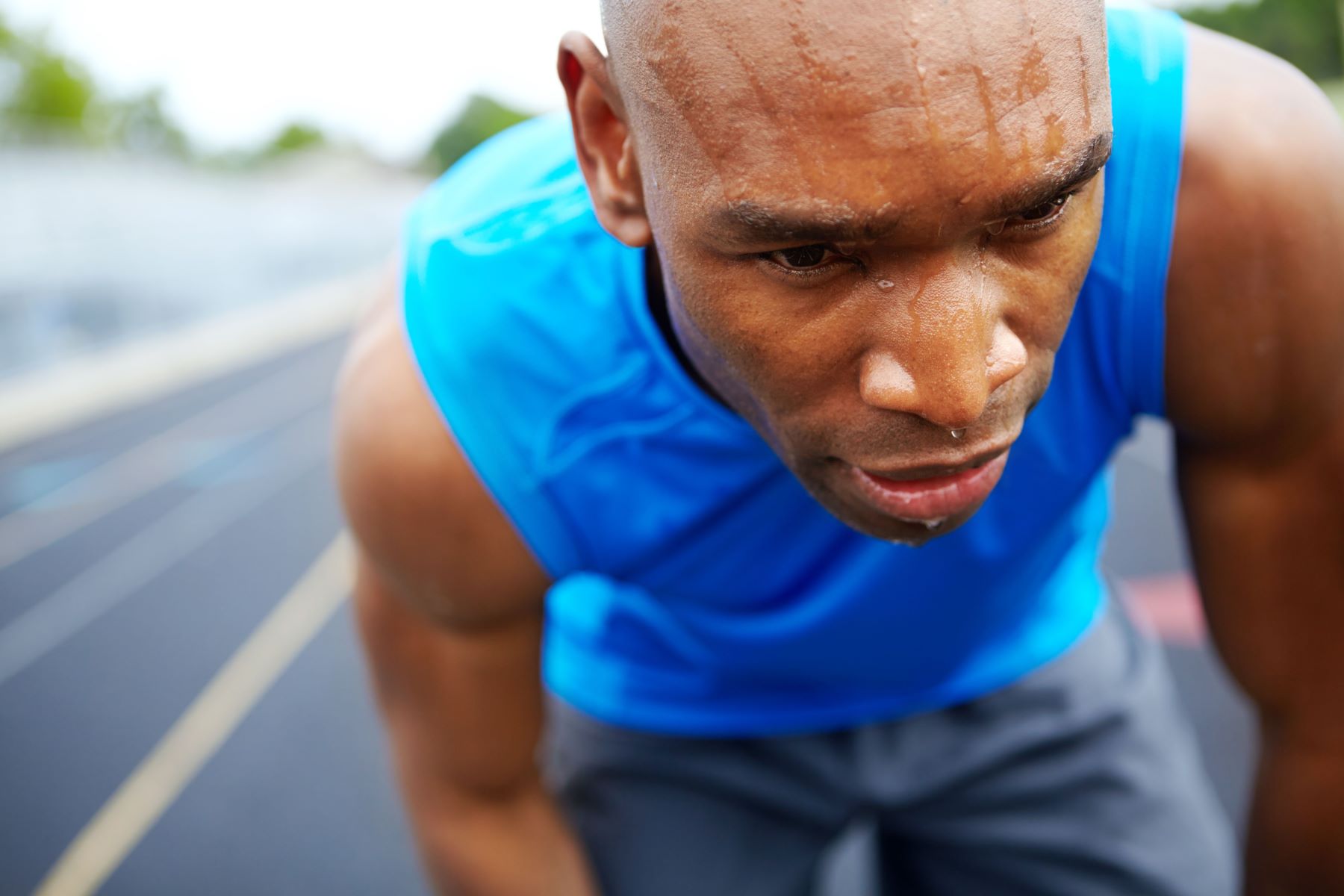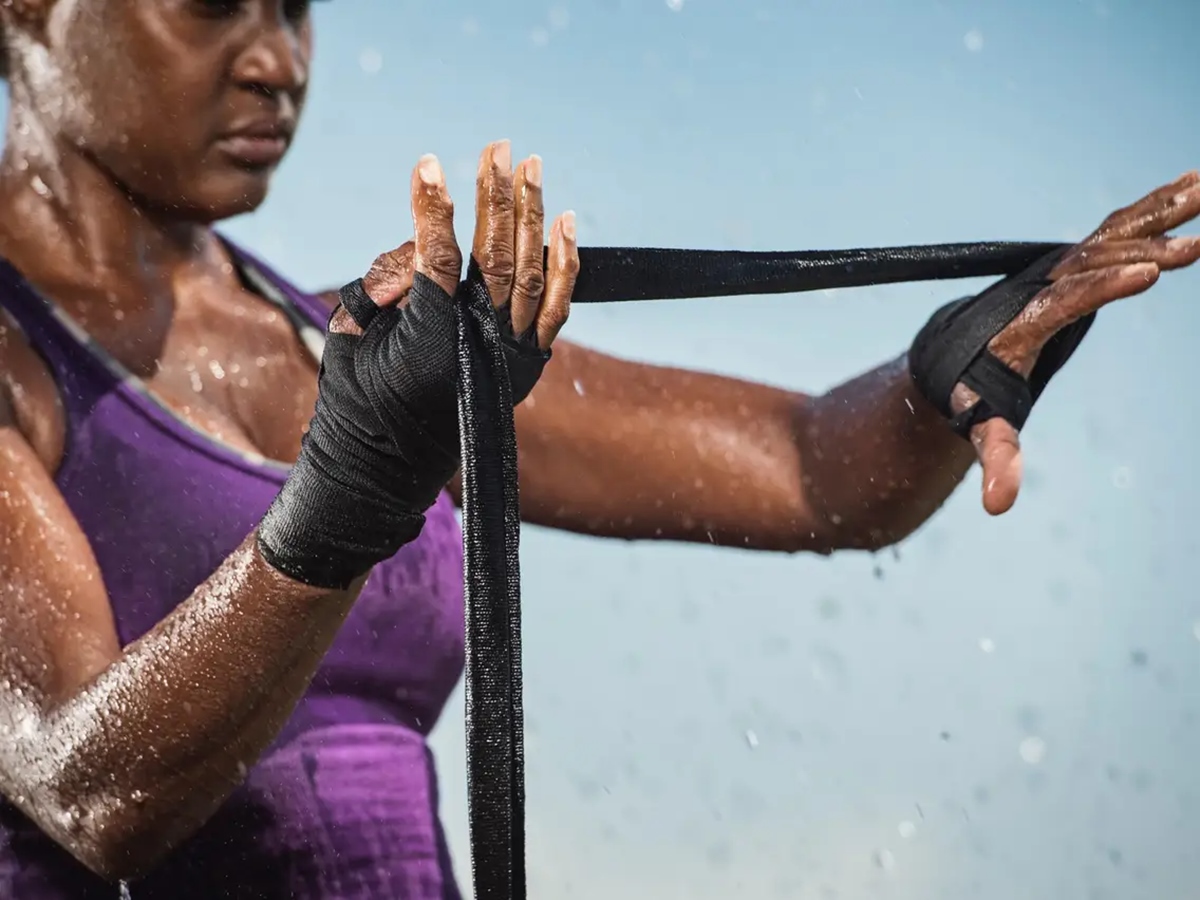

Featured
Why Do I Sweat So Much During Exercise
Modified: January 2, 2024
Discover the reasons behind excessive sweating during workouts and learn how to manage it. Featured tips and advice for reducing sweat during exercise.
Introduction
Exercise is a wonderful way to stay healthy and active, but for some people, it can also bring about an uncomfortable consequence: excessive sweating. If you find yourself drenched in sweat every time you hit the gym or go for a run, you may be wondering why you sweat so much during exercise. In this article, we will delve into the factors that contribute to excessive sweating during physical activity and explore how genetics, environmental conditions, hydration, fitness level, and medical conditions can all play a role in this phenomenon.
Sweating is a natural and necessary bodily function that helps regulate our body temperature. During exercise, our muscles produce heat, and in order to maintain a stable body temperature, our body needs to release this heat. This is where sweating comes in; as sweat evaporates from our skin, it cools us down. However, some individuals tend to sweat more profusely than others, even during moderate or low-intensity workouts.
There are several factors that can contribute to excessive sweating during exercise. One of the key factors is genetics. Our genetics play a significant role in determining the number of sweat glands we have and how active they are. If you have a family history of excessive sweating, there is a higher chance that you may experience the same during physical activity.
Environmental conditions, such as temperature and humidity, also play a significant role in our sweating response during exercise. When it’s hot and humid, our body naturally sweats more to help cool us down. Additionally, certain medical conditions and medications can also cause excessive sweating, even during physical activity. It’s important to be aware of these underlying conditions and seek medical advice if you suspect that they may be contributing to your excessive sweating.
Hydration and fitness level are two factors that can influence how much we sweat during exercise. Proper hydration is essential to maintain healthy sweat production, as dehydration can lead to reduced sweating or an imbalance in electrolytes, which can affect our body’s ability to cool down efficiently. On the other hand, individuals who are more physically fit tend to sweat earlier and more intensely during exercise because their bodies have become more efficient at regulating temperature.
Now that we have a better understanding of the various factors that contribute to excessive sweating during exercise, the next section will delve deeper into the role of genetics and how it can impact our sweat response.
Understanding Exercise-induced Sweating
Sweating during exercise is a normal physiological response that helps regulate body temperature. When we engage in physical activity, our muscles generate heat, and our body responds by initiating the sweating process. Sweat is made up of water and electrolytes, and as it evaporates from our skin, it cools us down. This cooling mechanism is crucial for maintaining a stable internal temperature and preventing overheating.
Exercise-induced sweating can vary greatly from person to person. Some individuals may only experience mild sweating, while others may find themselves drenched in sweat after a short workout. The amount of sweat produced during exercise depends on several factors, including genetics, environmental conditions, fitness level, and hydration status.
Genetics play an important role in determining how much we sweat during exercise. The number and activity of sweat glands can vary from person to person, and this can affect the amount of sweat produced. Some individuals have a higher number of sweat glands, while others may have sweat glands that are more active. This genetic predisposition can contribute to individual differences in sweat production during physical activity.
Environmental conditions, such as temperature and humidity, also influence the amount of sweat we produce during exercise. When it’s hot and humid, our body’s cooling mechanism kicks into high gear, leading to increased sweating. The body’s response to environmental conditions is adaptive, as sweating helps dissipate heat and maintain a stable body temperature. On the other hand, exercising in cooler conditions may result in less sweating.
Our fitness level can also affect how much we sweat during exercise. Regular physical activity and exercise can improve our body’s ability to regulate temperature. As we become more fit, our bodies adapt by increasing sweat production and enhancing the efficiency of the cooling process. This means that individuals who are more physically fit may sweat more during exercise compared to those who are less active.
Hydration status plays a crucial role in exercise-induced sweating. Proper hydration is essential for maintaining sweat production and preventing dehydration. When we are dehydrated, our body may conserve water by reducing sweat production, which can hinder the cooling process. On the other hand, being well-hydrated ensures that our body continues to produce sweat effectively, aiding in temperature regulation.
Understanding the factors that contribute to exercise-induced sweating is important for individuals who may find themselves sweating excessively during physical activity. By recognizing the role of genetics, environmental conditions, fitness level, and hydration, we can better understand our body’s response to exercise and take appropriate measures to stay comfortable and hydrated during workouts.
Factors that Contribute to Excessive Sweating
Excessive sweating during exercise, also known as hyperhidrosis, can be a source of discomfort and embarrassment for many individuals. While sweating is a normal bodily response during physical activity, some people may experience a higher level of sweat production than others. Several factors can contribute to excessive sweating, including genetics, underlying medical conditions, certain medications, and lifestyle choices.
Genetics play a significant role in determining our sweat response. Some individuals have a genetic predisposition to sweat more profusely than others. This can be attributed to factors such as the number and activity of sweat glands, as well as the sensitivity of the sweat glands to stimuli. If you have family members who experience excessive sweating, there is a higher likelihood that you may also sweat excessively during exercise.
Medical conditions can also contribute to excessive sweating during exercise. Conditions such as hyperthyroidism, diabetes, and menopause can affect the body’s thermoregulatory system, resulting in increased sweating. Additionally, certain medications like antidepressants, antipsychotics, and some blood pressure medications can also cause excessive sweating as a side effect.
Lifestyle choices can also influence sweat production. Individuals who consume spicy foods or caffeine before exercise may experience increased sweat production. These substances can stimulate the sweat glands and lead to excessive sweating. Additionally, being overweight or obese can contribute to excessive sweating. The excess body mass can result in a higher metabolic rate, which in turn increases heat production and triggers more sweat production.
Environmental factors such as temperature and humidity can exacerbate excessive sweating during exercise. Hot and humid conditions can stimulate sweat production, making individuals prone to sweating more profusely. Similarly, exercising in poorly ventilated areas can lead to increased sweat accumulation and discomfort.
Stress and anxiety can also play a role in excessive sweating during physical activity. The body’s response to stress involves the release of stress hormones, which can stimulate sweat glands and lead to increased sweat production. This is commonly known as stress-induced sweating.
It’s important to note that excessive sweating during exercise can be subjective, as what may be considered excessive for one person may be within the normal range for another. However, if excessive sweating impairs your ability to engage in physical activity, causes significant distress, or is accompanied by other concerning symptoms, it is advisable to consult with a healthcare professional for further evaluation and guidance.
By understanding the various factors that contribute to excessive sweating during exercise, individuals can better manage and cope with their sweating concerns. From making lifestyle adjustments to seeking medical advice, there are several strategies available to help mitigate the discomfort associated with excessive sweating.
The Role of Genetics in Sweating During Exercise
Genetics plays a significant role in determining our individual sweat response during exercise. Our genetic makeup influences factors such as the number and activity of sweat glands, the composition of sweat, and the sensitivity of our sweat glands to stimuli. These genetic variations can contribute to differences in sweating patterns between individuals.
Sweat glands are responsible for producing sweat, which helps cool down our body during exercise. Some individuals naturally have a higher number of sweat glands, while others have sweat glands that are more active. These variations in sweat gland density and activity are regulated by our genes. If you have a higher number of active sweat glands, you are likely to produce more sweat during physical activity.
Researchers have identified specific genes that are involved in sweating regulation. For example, the AQP5 gene is responsible for the formation of a protein that plays a crucial role in the transport of water across cell membranes, including sweat glands. Variations in the AQP5 gene can impact the efficiency of sweat production and potentially contribute to differences in sweat response during exercise.
Another gene, called the TRPV1 gene, is involved in sensing temperature and pain. This gene affects the sensitivity of the sweat glands to temperature changes and can influence how much sweat is produced in response to heat or physical exertion. Variations in this gene can result in differences in the amount of sweat produced during exercise.
Moreover, certain genetic variations can impact the composition of sweat. Sweat is not just made up of water; it also contains electrolytes such as sodium, potassium, and chloride. The balance of these electrolytes can vary among individuals due to genetic factors, which can influence the conductance of sweat and affect the cooling capabilities of sweat during exercise.
Understanding the role of genetics in sweating during exercise can help individuals better comprehend why their sweat response may differ from others. It’s important to note that there is no “normal” or “abnormal” sweat response, as it varies between individuals. Some individuals may naturally sweat more or less compared to others, and that is perfectly normal.
By acknowledging the role of genetics in sweating during exercise, individuals can focus on strategies to manage their sweat levels and stay comfortable during physical activity. This may include wearing moisture-wicking clothing, using antiperspirants, maintaining proper hydration levels, and exercising in cool and well-ventilated environments.
While genetics contribute to our sweat response, it’s essential to consider other factors that can influence sweating during exercise, such as environmental conditions, fitness level, and overall health. Taking a holistic approach to understanding sweating can help individuals effectively manage their sweat levels and enjoy their exercise routine.
The Influence of Temperature and Humidity
When it comes to sweating during exercise, temperature and humidity play a crucial role in determining the intensity of our sweat response. These environmental factors have a direct impact on our body’s thermoregulation and can significantly influence how much we sweat during physical activity.
Temperature is one of the primary factors that affect sweat production. When the body’s internal temperature rises during exercise, the brain signals the sweat glands to produce sweat as a way to cool us down. In hotter temperatures, our body’s cooling mechanisms are triggered more quickly and intensely, leading to increased sweat production. This is why you may notice yourself sweating more during a summer workout compared to a winter workout in cooler temperatures.
In addition to temperature, humidity also plays a crucial role in sweating during exercise. Humidity refers to the amount of water vapor present in the air. When the air is humid, it becomes more difficult for sweat to evaporate from our skin. Evaporation is a critical process in cooling the body as it removes heat from the skin. When sweat cannot evaporate efficiently due to high humidity, we may feel sticky and uncomfortable, and it can lead to a perception of increased sweating.
High humidity levels can also affect the rate at which our body cools down. Since evaporation is less efficient in humid conditions, our body may continue to produce sweat to compensate for the reduced cooling effect. This can result in a higher overall sweat output during exercise in humid environments.
On the other hand, exercising in low humidity conditions can also impact our sweat response. In dry environments, sweat evaporates more rapidly, leading to a more efficient cooling process. As a result, individuals may still sweat during exercise but with less noticeable perspiration on the skin.
It’s important to note that the influence of temperature and humidity on sweating can vary between individuals. Some people may be more sensitive to heat and humidity, and they may sweat more profusely even in moderate conditions, while others may have a less pronounced sweat response.
Understanding the influence of temperature and humidity on sweating during exercise can help individuals adapt their workout routines to optimize their comfort. In hotter and more humid conditions, it is crucial to take steps to stay cool and hydrated. This includes wearing breathable clothing, exercising during cooler times of the day, seeking shaded areas, and staying well-hydrated with water or electrolyte-rich beverages.
By being mindful of the temperature and humidity levels, individuals can make adjustments to their exercise routine to ensure optimal performance and minimize any discomfort associated with excessive sweating.
Hydration and Sweating
Hydration plays a vital role in our body’s ability to regulate temperature and maintain an efficient sweat response during exercise. Adequate hydration is crucial for ensuring that our sweat production remains balanced and effective in cooling us down.
When we exercise, our body temperature rises, and sweating helps cool us down. Sweat is primarily composed of water, electrolytes, and trace elements. Proper hydration ensures that our body has an adequate supply of water to produce sweat. Dehydration, on the other hand, can significantly impact our sweat response.
When we are dehydrated, our body may not be able to produce enough sweat or maintain an optimal balance of electrolytes. This can hinder the cooling process and make it more challenging for our body to regulate temperature effectively. In some cases, dehydration can even lead to reduced sweat production, which can be dangerous as it impairs our body’s ability to cool down and can increase the risk of heat-related illnesses.
It is crucial to hydrate before, during, and after exercise to ensure proper fluid balance. Drinking water before a workout helps ensure that we are starting off in a well-hydrated state. During exercise, it’s important to drink fluids regularly to replenish the water lost through sweat. It’s recommended to drink water every 15 to 20 minutes during exercise, especially in hot and humid conditions, or during prolonged and intense workouts.
Electrolytes, such as sodium, potassium, and chloride, are also important for maintaining proper hydration and sweat production. These minerals help regulate water balance and replace the electrolytes lost in sweat. Consuming sports drinks or electrolyte-enhanced beverages during intense or prolonged exercise can help replenish these electrolytes and support optimal hydration.
In addition to maintaining hydration during exercise, it’s also crucial to rehydrate after a workout. This helps restore fluid balance and facilitates the recovery process. Drinking a combination of water and electrolyte-rich fluids can help replenish the fluids lost during exercise and support the body’s post-workout recovery.
It’s important to note that our individual hydration needs may vary depending on factors such as body size, intensity and duration of exercise, environmental conditions, and personal sweat rate. Monitoring urine color is a simple way to assess hydration status; pale yellow to clear urine is a good indicator of adequate hydration, while darker urine suggests dehydration.
By prioritizing hydration before, during, and after exercise, individuals can ensure that their sweat response remains balanced and effective. Proper hydration not only helps regulate body temperature and support optimal performance but also reduces the risk of heat-related illnesses associated with dehydration.
Fitness Level and Sweating
When it comes to sweating during exercise, fitness level plays a significant role. Individuals who are more physically fit tend to sweat more profusely and at an earlier stage during physical activity compared to those who are less fit. This is because the body of a fit individual has adapted to exercise and has become more efficient at regulating temperature.
Regular exercise and physical activity have a direct impact on our body’s thermoregulatory system. As we engage in regular workouts, our body becomes more adept at responding to the heat generated during exercise. This adaptation leads to an increase in sweat production and an enhanced ability to cool down through the evaporation of sweat from the skin.
One of the ways fitness level influences sweating is by increasing the number of sweat glands. Regular exercise can stimulate the growth and activation of sweat glands, increasing their capacity to produce sweat. This can result in more pronounced sweating during physical activity.
Additionally, fitness level affects the sensitivity and responsiveness of sweat glands. Fit individuals may have sweat glands that are more sensitive to stimuli, such as an increase in body temperature or physical exertion. This heightened sensitivity can lead to an earlier and more intense sweating response compared to individuals with a lower fitness level.
Furthermore, individuals who are more physically fit tend to have a higher metabolic rate. An increased metabolic rate results in higher heat production during exercise, which triggers the body to initiate the cooling process through sweating. As a result, fit individuals may experience more overall sweating as their body works harder to maintain a stable temperature.
It’s important to note that the relationship between fitness level and sweating can be individualized and influenced by various factors, including genetics and environmental conditions. Some individuals may naturally have a higher sweat rate even with a lower fitness level, while others may experience a more significant increase in sweat production as they improve their fitness.
While sweating more during exercise may initially be perceived as uncomfortable, it is a positive indication that the body is adapting and working efficiently to regulate temperature. The increased sweat production allows the body to cool down effectively, preventing overheating and supporting optimal performance during physical activity.
Staying well-hydrated is particularly crucial for individuals with a higher fitness level and increased sweating. This ensures that the body can replace the fluids lost through sweat and maintain proper hydration levels. Drinking water regularly during exercise, as well as consuming electrolyte-rich beverages when engaging in intense or prolonged workouts, can help support optimal hydration.
By recognizing the impact of fitness level on sweating and understanding the body’s adaptive response to exercise, individuals can focus on staying hydrated and maintaining a comfortable workout routine, regardless of their sweat levels.
Medical Conditions and Sweating during Exercise
While sweating is a normal response during exercise, certain medical conditions can cause excessive sweating or alter the normal sweating patterns. If you find yourself sweating excessively or experiencing unusual sweating patterns during physical activity, it’s essential to consider the possibility of an underlying medical condition.
One medical condition that can contribute to excessive sweating during exercise is hyperthyroidism. This condition occurs when the thyroid gland produces an excess amount of thyroid hormones. These hormones can speed up the body’s metabolic rate, leading to increased heat production and sweating. Individuals with hyperthyroidism may experience excessive sweating even with light or moderate exercise.
Another condition associated with excessive sweating is diabetes. Both type 1 and type 2 diabetes can affect the body’s ability to regulate blood sugar levels. Uncontrolled diabetes can lead to nerve damage, including damage to the nerves that control sweating. This can result in abnormal sweating patterns, including excessive sweating during physical activity.
Menopause is a natural biological process that occurs in women as they age. During menopause, hormonal changes can lead to hot flashes and night sweats. These sudden episodes of intense heat and sweating can be triggered by physical activity, making exercise uncomfortable for some women experiencing menopause.
Certain medications can also cause excessive sweating as a side effect. Medications such as antidepressants, antipsychotics, and some blood pressure medications can disrupt the body’s normal sweating response. If you suspect that your medications are contributing to excessive sweating during exercise, it is important to consult with your healthcare provider for further evaluation and potential medication adjustments.
Heat-related illnesses, such as heat exhaustion or heat stroke, can also cause excessive sweating during exercise. These conditions occur when the body’s cooling mechanisms are overwhelmed, leading to an inability to regulate temperature. Symptoms may include profuse sweating, dizziness, nausea, and confusion. Heat-related illnesses are medical emergencies and require immediate medical attention.
If you are experiencing excessive sweating during exercise that is accompanied by other concerning symptoms such as chest pain, lightheadedness, or shortness of breath, it is essential to seek medical advice. These symptoms could be indicative of a more serious underlying condition, such as a heart problem or an electrolyte imbalance.
Managing excessive sweating during exercise related to medical conditions may involve treating the underlying condition itself. For example, individuals with uncontrolled hyperthyroidism or diabetes may need medical management to control their symptoms, including excessive sweating. It is crucial to work closely with healthcare professionals to ensure proper diagnosis, treatment, and management of these conditions.
By being aware of medical conditions that can contribute to excessive sweating during exercise, individuals can take appropriate steps to manage their symptoms and still maintain an active and healthy lifestyle.
Managing Excessive Sweating during Exercise
Excessive sweating during exercise can be uncomfortable and even interfere with your workout routine. However, there are several strategies you can adopt to manage excessive sweating and stay comfortable during physical activity.
Choose the right clothing: Wearing moisture-wicking and breathable fabrics can help manage excessive sweating by allowing sweat to evaporate more easily. Opt for loose-fitting clothing that promotes airflow and avoids trapping sweat against your skin.
Use antiperspirants: Antiperspirants can be effective in reducing sweating by blocking the sweat ducts and decreasing the amount of sweat produced. Apply an antiperspirant, preferably one that contains aluminum chloride, to your underarms or other areas prone to excessive sweating before your workout.
Maintain proper hydration: Ensuring adequate hydration is crucial for supporting proper sweat production and preventing dehydration. Drink water before, during, and after exercise to replenish lost fluids and maintain optimal fluid balance.
Manage environmental conditions: If possible, try exercising in cooler environments or during the cooler parts of the day. Seek out shaded areas or air-conditioned spaces to reduce the impact of high temperatures and humidity on your sweat response.
Consider medications or treatments: If your excessive sweating persists despite lifestyle modifications, you may want to discuss potential solutions with your healthcare provider. There are medications and treatments available, such as prescription antiperspirants, oral medications, Botox injections, and even surgical options, that can help manage severe cases of excessive sweating.
Take breaks and cool down: If you find yourself becoming overheated or overwhelmed by excessive sweating, take regular breaks during your workout to rest and cool down. Use cold towels or a fan to help lower your body temperature and facilitate sweat evaporation.
Practice stress management techniques: Stress and anxiety can trigger excessive sweating. Incorporating stress management techniques, such as deep breathing exercises, meditation, or yoga, can help reduce stress levels and manage sweat response during exercise.
Monitor your body’s response: Pay attention to how your body reacts during exercise, and take cues from it. If you feel dizzy, lightheaded, or experience other concerning symptoms, it’s important to listen to your body and rest. Pushing yourself beyond your limits can exacerbate excessive sweating and can be detrimental to your overall health.
Remember, excessive sweating during exercise is a natural bodily response for some individuals. While it might be uncomfortable, it is generally not cause for concern. However, if excessive sweating is persistent, severe, or accompanied by other concerning symptoms, it’s important to seek medical advice for further evaluation and guidance.
By implementing these strategies and working closely with healthcare professionals when needed, you can effectively manage excessive sweating during exercise and focus on enjoying your workout routine without discomfort or distraction.
Conclusion
Excessive sweating during exercise can be a common and sometimes challenging issue to manage. However, understanding the factors that contribute to excessive sweating and implementing appropriate strategies can help individuals stay comfortable and enjoy their workout routines.
Factors such as genetics, temperature, humidity, hydration, fitness level, and underlying medical conditions all play a role in sweating during exercise. Genetics influence sweat gland activity and the number of sweat glands, while environmental conditions like temperature and humidity can impact sweat production. Hydration status and fitness level also affect how much we sweat during physical activity, and certain medical conditions and medications can contribute to excessive sweating.
To manage excessive sweating during exercise, it’s important to choose breathable clothing, use antiperspirants, and maintain proper hydration. Adjusting your exercise environment to minimize heat and humidity can also help reduce excessive sweating. If lifestyle modifications aren’t effective, seeking medical advice and considering treatments or medications may be necessary.
Ultimately, it’s important to remember that everyone’s sweat response is unique and what may be excessive for one person could be within the normal range for another. It’s essential to listen to your body, monitor your symptoms, and seek medical advice if you have any concerns about excessive sweating during exercise.
By implementing effective strategies, staying aware of underlying medical conditions, and maintaining proper hydration, individuals can manage and cope with excessive sweating during exercise. Don’t let excessive sweating deter you from engaging in physical activity and enjoying the benefits of an active lifestyle. Embrace your body’s natural cooling mechanism and find comfort and confidence in your fitness journey.

